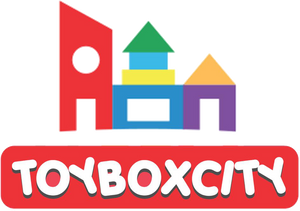Language Learning Apps for Children: Do They Work?
In today’s digital age, children are growing up surrounded by smartphones, tablets, and interactive technology. One of the most popular uses of these devices is educational apps, particularly those designed to teach languages.
The Rise of Language Learning Apps for Children
Over the past decade, language learning apps have exploded in popularity. Companies like Duolingo, Lingokids, and Mondly Kids have created platforms specifically tailored for young learners.
Why they became popular:
-
Accessibility – Apps are available anytime, anywhere, making language learning flexible.
-
Affordability – Many apps are free or cheaper than traditional classes.
-
Gamification – Children enjoy interactive games, rewards, and colorful visuals.
-
Globalization – Parents see language skills as essential for future opportunities.
-
Pandemic Influence – Remote learning accelerated the adoption of educational apps.
The rise of these apps reflects a shift in how families view education. Instead of relying solely on schools, parents now supplement learning with digital tools.
However, popularity does not always equal effectiveness. The question remains: do these apps truly help children acquire and retain new languages?
How Children Learn Languages: The Science
To evaluate apps, we must first understand how children naturally acquire languages. Research in linguistics and cognitive science shows that children learn differently from adults.
Key principles of child language learning:
-
Critical Period Hypothesis – Children are most receptive to language learning before puberty.
-
Immersion – Exposure to language in natural contexts accelerates learning.
-
Play and Interaction – Games and social interaction enhance retention.
-
Repetition – Frequent practice builds vocabulary and grammar.
-
Multisensory Input – Combining visuals, sounds, and movement strengthens memory.
Children’s brains are wired to absorb languages quickly, but they need meaningful context and interaction. Apps that replicate these conditions are more likely to succeed.
Benefits of Language Learning Apps for Children
Language learning apps can provide unique advantages when designed well.
Key benefits include:
-
Engagement – Bright visuals, songs, and games keep children motivated.
-
Personalization – Adaptive algorithms adjust difficulty to match the child’s level.
-
Immediate Feedback – Children receive instant corrections, reinforcing learning.
-
Safe Environment – Apps allow practice without fear of embarrassment.
-
Parental Involvement – Many apps include dashboards for parents to track progress.
These benefits make apps appealing to families who want to introduce language learning early. They can complement school lessons or serve as a fun extracurricular activity.
Limitations and Challenges of Language Learning Apps
Despite their advantages, language learning apps are not a magic solution.
Challenges include:
-
Lack of Real Interaction – Apps cannot fully replicate conversations with native speakers.
-
Screen Time Concerns – Excessive use may affect health and attention span.
-
Motivation Drop – Children may lose interest without parental encouragement.
-
Limited Cultural Context – Apps often teach vocabulary without cultural nuance.
-
Overreliance – Parents may expect apps to replace teachers, which is unrealistic.
These limitations highlight the importance of balance. Apps should be used as tools, not substitutes for real‑world practice and guidance.
Features of Effective Language Learning Apps
Not all apps are created equal. The most effective ones share certain design features.
Essential features include:
-
Gamification – Points, badges, and levels keep children engaged.
-
Interactive Content – Songs, stories, and role‑playing activities enhance learning.
-
Adaptive Learning – AI adjusts lessons to the child’s progress.
-
Parental Controls – Allow parents to monitor and guide usage.
-
Offline Access – Enables learning without constant internet connection.
Apps with these features are more likely to support long‑term language acquisition. Parents should evaluate apps carefully before choosing one for their child.
The Role of Parents and Teachers
Apps are most effective when combined with parental and teacher involvement.
Ways adults can support learning:
-
Set Goals – Establish daily or weekly practice routines.
-
Encourage Practice – Reinforce app lessons with real conversations.
-
Provide Context – Explain cultural meanings behind words.
-
Monitor Progress – Use app dashboards to track improvement.
-
Balance Screen Time – Ensure apps are part of a healthy routine.
Children thrive when adults actively participate in their learning journey. Apps should be seen as supplements, not replacements, for human guidance.
Case Studies and Research Findings
Several studies have examined the effectiveness of language learning apps for children.
Findings include:
-
Improved Vocabulary – Apps help children learn basic words quickly.
-
Better Pronunciation – Speech recognition features improve accuracy.
-
Short‑Term Gains – Children show progress after weeks of use.
-
Need for Reinforcement – Without continued practice, gains fade.
-
Mixed Results – Effectiveness varies depending on app design and parental involvement.
For example, a study on Duolingo Kids found that children improved vocabulary retention but needed additional practice with grammar and conversation.
The Future of Language Learning Apps for Children
Technology continues to evolve, and future apps may become even more effective.
Emerging trends include:
-
Virtual Reality (VR) – Immersive environments for practicing conversations.
-
Augmented Reality (AR) – Interactive objects that teach vocabulary in real time.
-
AI Tutors – Personalized guidance that mimics human teachers.
-
Global Collaboration – Apps connecting children with peers worldwide.
-
Integration with Schools – Blended learning models combining apps and classroom instruction.
The future looks promising, but success will depend on balancing technology with human interaction and cultural context.


